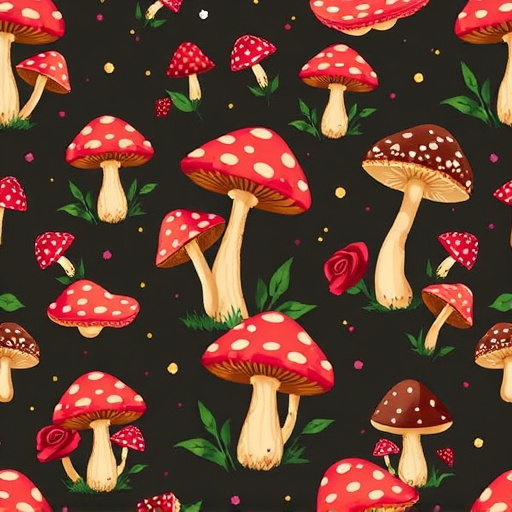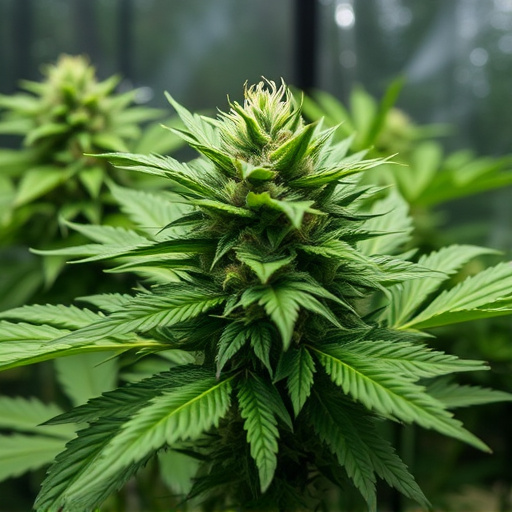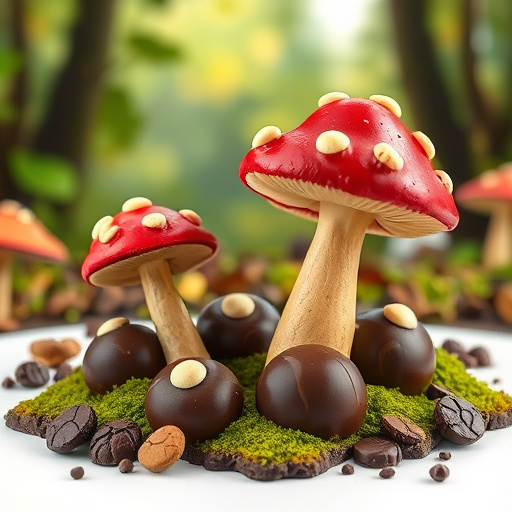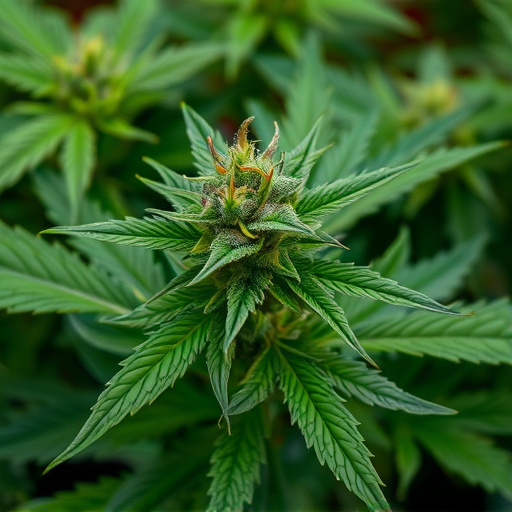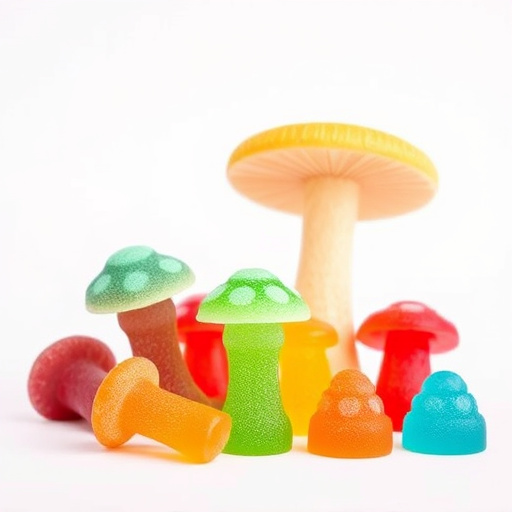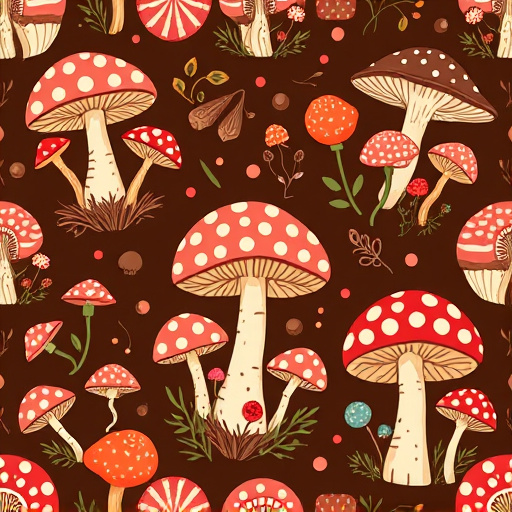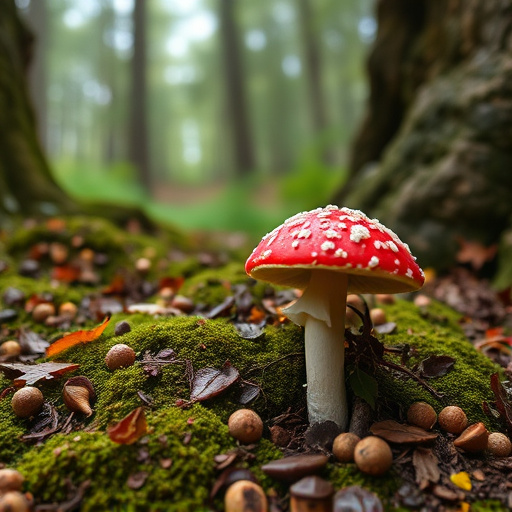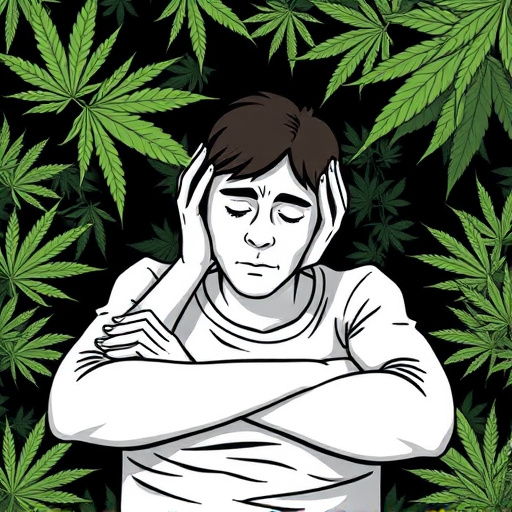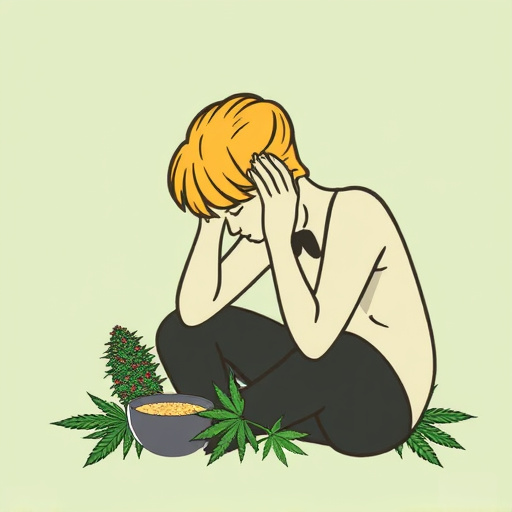Cannabis plants produce cannabinoids like THC and CBD, with THC affecting mood and CBD offering therapeutic benefits without psychotropic effects. Color variations in cannabis, driven by genetic factors, correspond to distinct chemical compositions and therapeutic effects. Rare colors like purple are linked to higher anthocyanin levels, which have anti-inflammatory and antioxidant properties beneficial for depression management. Environmental conditions impact these pigmentations, making cannabis a promising area of study for botanical and medicinal applications in treating depression through specific strains.
Uncover the captivating secrets behind the vibrant hues of purple, red, and blue in cannabis strains, often sought after by enthusiasts. This article delves into the intricate world of cannabinoid profiles, exploring how THC and CBD levels influence these unique colors. We also uncover genetic varieties that contribute to this diversity, and environmental factors that play a pivotal role in creating distinctive tints, particularly for cannabis strains used to manage depression.
- Understanding Cannabinoid Profiles: The Role of THC and CBD
- Genetic Varieties and Their Impact on Color Variation
- Environmental Factors: How They Contribute to Purple, Red, and Blue Tints in Cannabis Strains for Depression
Understanding Cannabinoid Profiles: The Role of THC and CBD

Cannabis plants, scientifically known as Cannabis sativa, produce a diverse range of chemical compounds that contribute to their unique properties and effects on the human body. Among these compounds, cannabinoids are the most well-known and have garnered significant interest in the medical field. Two prominent cannabinoids often discussed when considering cannabis strains for depression are THC (Tetrahydrocannabinol) and CBD (Cannabidiol).
THC is primarily responsible for the psychoactive effects associated with cannabis, inducing feelings of euphoria and relaxation. It interacts with our endocannabinoid system, particularly binding to CB1 receptors in the brain, which may help alleviate symptoms of depression by modulating mood and emotion. On the other hand, CBD does not produce a “high” but rather offers therapeutic benefits without the psychotropic effects. Research suggests that CBD could be beneficial in treating anxiety and depression due to its anti-inflammatory and neuroprotective properties. Understanding the cannabinoid profiles of different cannabis strains is crucial for consumers looking to manage their mental health, as it enables them to choose varieties with specific ratios of THC and CBD tailored to their needs.
Genetic Varieties and Their Impact on Color Variation
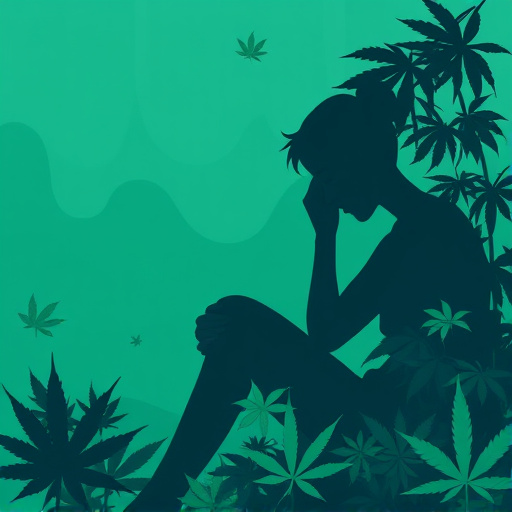
Cannabis plants, scientifically known as Cannabis sativa, display an incredible range of colors, with purple, red, and blue hues being particularly intriguing. This color variation is not merely aesthetic; it’s largely influenced by genetic factors that play a crucial role in shaping the overall profile of cannabis strains. Each color shift often correlates with specific chemical compositions, including cannabinoids and terpenes, which contribute to the diverse therapeutic effects experienced by users, such as those looking for cannabis strains for depression relief.
Genetic varieties account for the rare and striking colors seen in cannabis. For instance, the purple hues are often associated with higher levels of anthocyanins, a type of pigment responsible for giving grapes their color and found in certain cannabis cultivars. Red variations might result from heightened concentrations of carotenoids, which are also present in many fruits and vegetables. Blue shades, on the other hand, are less common and typically attributed to specific genetic mutations that impact chlorophyll production, leaving more space for blue-hued pigments to emerge. These genetic distinctions not only contribute to visual appeal but also offer unique therapeutic benefits, making cannabis a captivating subject of study for botanists and medicinal users alike.
Environmental Factors: How They Contribute to Purple, Red, and Blue Tints in Cannabis Strains for Depression

Environmental factors play a significant role in the development of unique pigmentations in cannabis strains, including the distinctive purple, red, and blue hues often associated with certain varieties. These tints are not just aesthetic; they can indicate specific chemical compositions that may offer therapeutic benefits for various conditions, particularly depression.
Factors like light exposure, temperature, and humidity levels during the growth cycle can trigger the production of anthocyanins—a type of pigment responsible for colors ranging from red to blue-purple in plants. In cannabis strains, these anthocyanins can accumulate in different parts of the plant, such as leaves, buds, or trichomes, resulting in the observed color variations. Strains known for their purple or blue hues often contain higher levels of these pigments, which are believed to have anti-inflammatory and antioxidant properties, potentially contributing to their effectiveness in managing symptoms of depression.
The unique colors of purple, red, and blue in cannabis strains are a result of a complex interplay between genetic diversity, cannabinoid profiles, and environmental influences. These factors collectively contribute to the diverse range of cannabis strains available today, including those specifically cultivated for managing symptoms of depression. Understanding these causes not only enhances our appreciation for the plant’s complexity but also guides breeders in creating tailored varieties to meet specific therapeutic needs, making cannabis a valuable tool in the search for effective treatment options for mental health conditions like depression.
